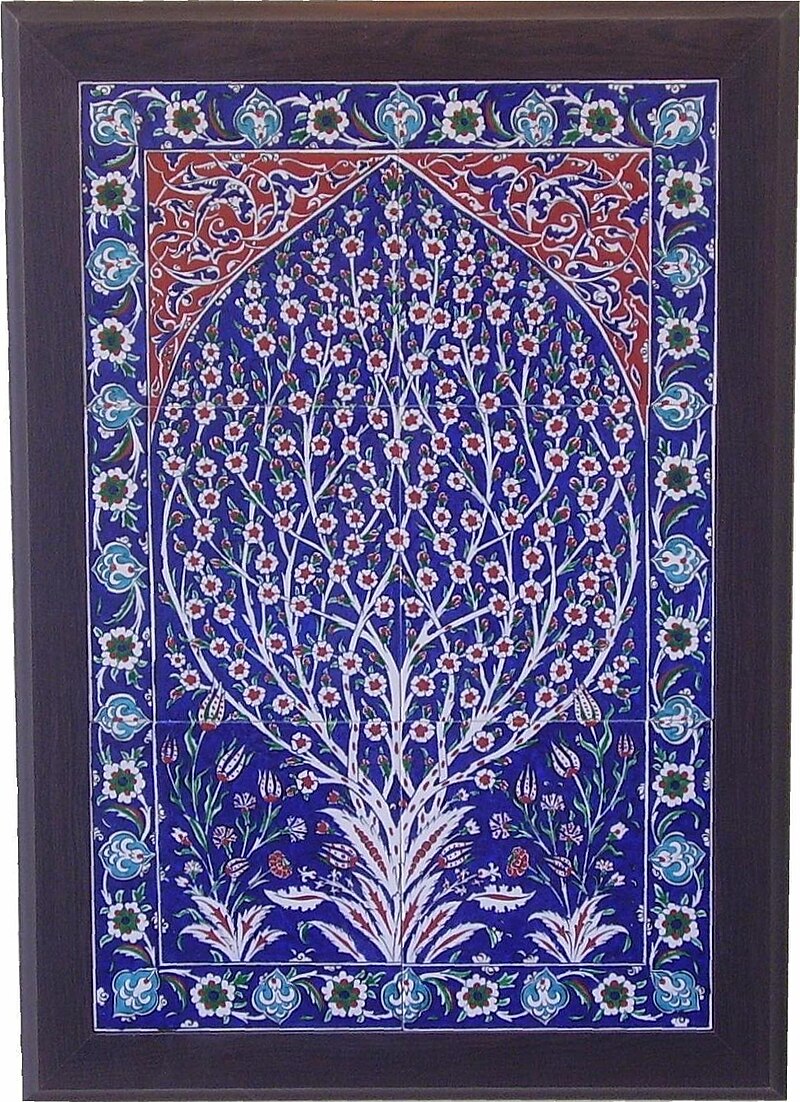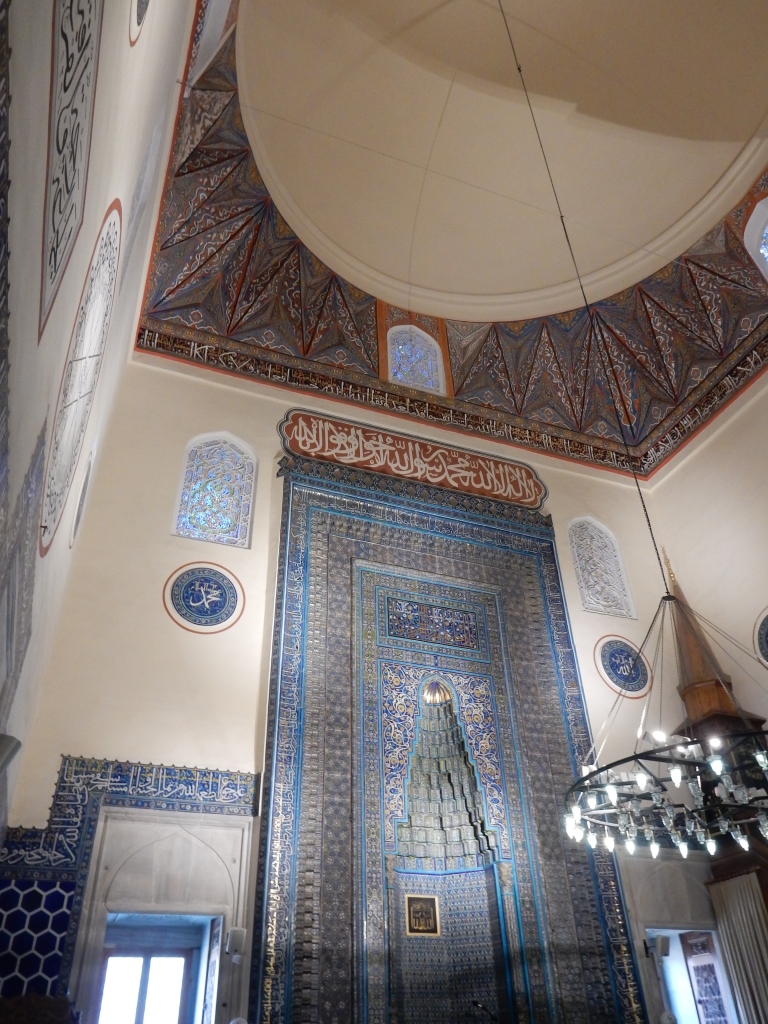As I have noted before, last year I had a chance to do a self-funded study trip to Türkiye to study Islamic arts namely Tezhip (gilded illumination) and Calligraphy in an institution there as well as to study Ottoman Turkish and Turkish Language. I was there for a bit more than 2 months so I went to a lot of places and cities during my time. Unfortunately, the 2023 earthquake hit the southern part of the country and therefore many of my classes were cancelled or cut short ; many of my teachers were affected directly or worked as volunteers in the affected areas. During my times of not having my classes I would go around Istanbul to visit (in most cases, again) the historic places in that ancient city.
I arrived in Türkiye on 20th of December 2022, about 10 days before starting my course in Istanbul. After registering and handling all the necessary things for my study I took a flight and went to Sivas, a city in the eastern part of the country. This is my first time coming to this part of the country, so everything is quite new for me. I only stayed there for about 2 nights, and during my time there I had the chance to visit some of the main sights of the city.
Sivas is a beautiful and calm ancient city which is known more for its role for the establishment of the Turkish Republic, where it held the congress of Sivas and hosted Mustafa Kemal Ataturk. However, I was not there for that part of Turkish history. There was a lot of Seljuk and Ottoman heritages you can find here, although mostly you will see Seljuk period monuments. I even stayed at a Seljuk-era restored Han (inn) not too far from the city center. Also the city is very pedestrian friendly so much so in fact you can easily just walk to the city center (Kent Meydanı) and see all the points of interest there in a short time.
Just about 20 minutes walk from my hotel (The restored Han, Behram Paşa Otel) is the city centre where you can visit sights such as the the Buruciye Medrese, the Çifte Minare Medresesi and the Kale Camii. So you can actually see all the main sights here in one day unless you want to go to the Archeological Museum which is a bit north to the center, although still in a very comfortable walking distance. Most of my time I could not walk a long distance to my bad legs (which turns out to be calcium deficiency!) so I mostly walked around the city center and visited all the sights there.
First, lets talk about the hotel I stayed in – Behram Paşa Otel. It was a beautifully restored Han (caravanserai inn) built in 1576. It still has the characteristics of the original building including the lion motifs around its windows. but restored and remade into a modern hotel and restaurant. In the middle of the hotel which used to be the courtyard of the Han there is the hotel’s restaurant, which is open for breakfast for the guests and lunch and dinner for public . Some Turkish people are heavy smokers and since it is actually acceptable to smoke indoors here, all the smoke goes up to the rooms on the second floor which is as you can imagine is quite uncomfortable. Thankfully when the restaurant closes the smell ceases. The room itself was good enough for a solo traveler like me. It was small and cramped just like my own room back home. As you can imagine, the rooms are actually converted from the original Han rooms, so the sizes are exactly the same as it was back then… plus a small corner of the room allotted for the bathroom. You can really feel like you are a traveler from the old times traveling along the Silk Road, but with modern amenities and comforts.
Not far from the hotel is the city’s old square, where many of the city’s main sights are situated. As you can see the square is actually sunken from the rest of the city, presumably like many other places in Türkiye, are built upon the older foundations. To reach the square you have to take a flight of stairs down. It is quite surreal to see these beautiful historical ancient mosques and marasahs surrounded by modern cut and paste apartments and building. Such a fascinating juxtaposition and yet, you can really imagine yourself in a time long past , wondering upon these fantastical creation of man.

If you’re coming from the east side of the city, you will be able to immediately see the twin minarets of the Çifte Minare Medresesi (twin minaret religious school) Although most of the building is in ruins, the front facade and the characteristic two minarets still stands today. Looking at it up close, despite its ruined state, is a marvel to see. It makes you wonder how, several hundred years ago, our ancestors can do such complicated art. The arabesques, the muqarnas, the kufic calligraphy and the geometric design are all carved masterfully onto the walls of the madrasa. Imagine to study in these kind of schools where you are always surrounded with these amazing art!
Just across the Çifte Minareli Medrese, is another madrasa called Şifaiye Medresesi where it was once both a hospital (Darüşşifa) and a school for medical studies – hence the name . Now it is a bazaar where the local handicrafts for tourists are sold here as well as a cafe. It features a large courtyard with a fountain in the middle. The whole place was calm, and no one was pushing you to buy anything. If all, they were a bit surprised to see a foreigner in their city. On one side of the Medrese there was a beautifully decorated facade. This is the burial place of the Rum Seljuk Sultan Izeddin Keykavus I. The facade is a beautiful example of Seljuk art and architecture, and although you cannot enter the chamber itself, you can peer inside, revealing a dark room with a beautifully carved mihrab. Soft light shines from the four windows on two sides of the room, falling on the tiled cenotaphs that lies within.

A very short walk away is the Kale Mosque, an Ottoman Era mosque build by Sultan Murad III’s governor to Sivas Ali Beyoğlu Mahmud Paşa in 1580 thus the alternative name Mahmud Paşa mosque. It bears all the characteristics of the Ottoman mosque. The building is essentially a square mosque, topped with an elegant low dome. Inside the mosque is simple but beautifully decorated with tiles and painted ornaments. The Mihrab and Mimbar are minimally decorated but made from luxurious marble. A singular minaret stands west of the mosque. In the outside there was a curious stone called the Sadaka taşi where alms were given and taken in anonymity in the old days. nearby was a hammam which is a part of the mosque complex although unfortunately was left in ruins.

As I noted before, when I embarked on this journey I had a terrible pain in my legs that I could not walk a lot even in short distances. So when I finished touring the city centre and doing a little bit of shopping for the cold weather, I took a taxi and went straight back to the hotel to rest for the next day’s adventure.
























































